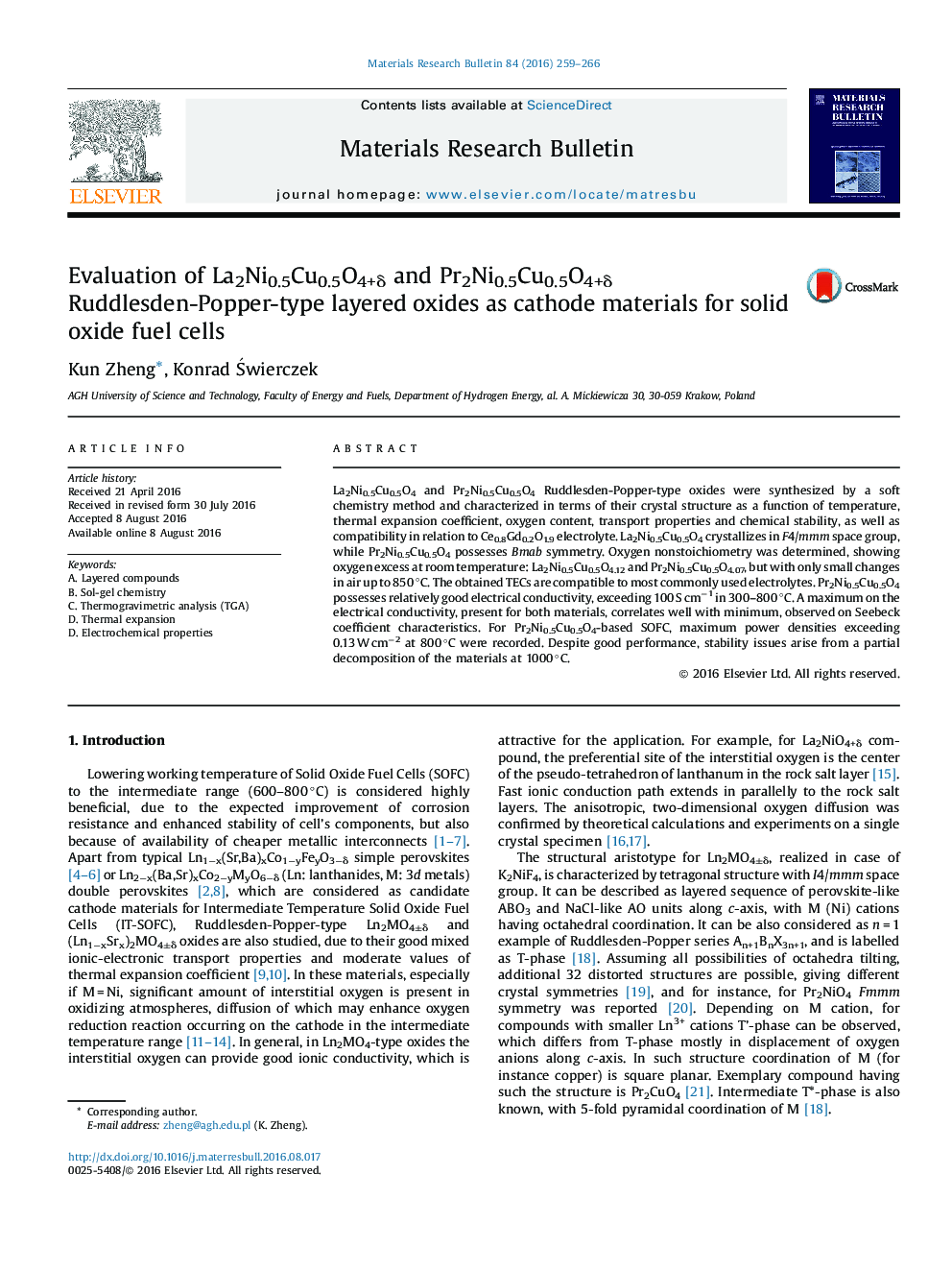| Article ID | Journal | Published Year | Pages | File Type |
|---|---|---|---|---|
| 1486885 | Materials Research Bulletin | 2016 | 8 Pages |
•Crystal structure as a function of temperature, microstructure and thermal expansion coefficient of La2Ni0.5Cu0.5O4 and Pr2Ni0.5Cu0.5O4.•Oxygen nonstoichiometry and transport properties of La2Ni0.5Cu0.5O4+δ and Pr2Ni0.5Cu0.5O4+δ.•Chemical stability and compatibility of La2Ni0.5Cu0.5O4 and Pr2Ni0.5Cu0.5O4 with ceria-based electrolyte.•Properties of IT-SOFC cells with La2Ni0.5Cu0.5O4 and Pr2Ni0.5Cu0.5O4-based cathode materials.
La2Ni0.5Cu0.5O4 and Pr2Ni0.5Cu0.5O4 Ruddlesden-Popper-type oxides were synthesized by a soft chemistry method and characterized in terms of their crystal structure as a function of temperature, thermal expansion coefficient, oxygen content, transport properties and chemical stability, as well as compatibility in relation to Ce0.8Gd0.2O1.9 electrolyte. La2Ni0.5Cu0.5O4 crystallizes in F4/mmm space group, while Pr2Ni0.5Cu0.5O4 possesses Bmab symmetry. Oxygen nonstoichiometry was determined, showing oxygen excess at room temperature: La2Ni0.5Cu0.5O4.12 and Pr2Ni0.5Cu0.5O4.07, but with only small changes in air up to 850 °C. The obtained TECs are compatible to most commonly used electrolytes. Pr2Ni0.5Cu0.5O4 possesses relatively good electrical conductivity, exceeding 100 S cm−1 in 300–800 °C. A maximum on the electrical conductivity, present for both materials, correlates well with minimum, observed on Seebeck coefficient characteristics. For Pr2Ni0.5Cu0.5O4-based SOFC, maximum power densities exceeding 0.13 W cm−2 at 800 °C were recorded. Despite good performance, stability issues arise from a partial decomposition of the materials at 1000 °C.
Graphical abstractFigure optionsDownload full-size imageDownload as PowerPoint slide
